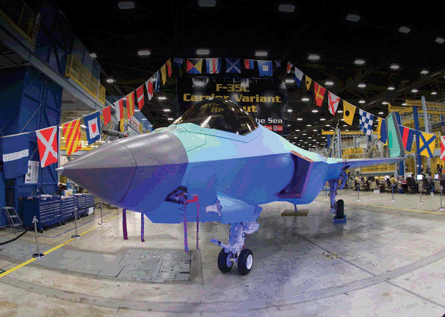The US Naval Air Systems Command's top cost estimator has warned in a new internal briefing obtained by Flight International that the Lockheed Martin F-35B/C variants are getting harder to afford.
Lockheed continues to insist, however, that cost estimates within the programme have not changed since 2007, which it says is supported by its recent contractual performance.
But the NAVAIR briefing, presented to US Navy officials on 4 January, adds fuel to a series of recent reports that the Department of Defense is taking a more conservative approach to estimating the F-35's overall costs, with potential production unit cuts likely in the fiscal year 2011 budget request scheduled for release in February.
According to NAVAIR's cost department, the F-35's total ownership costs, including development, production and sustainment, has doubled to $704 billion since Lockheed won the contract eight years ago.
 |
|---|
© Lockheed Martin |
Moreover, NAVAIR estimates the total of 680 short take-off and vertical landing F-35Bs and carrier-variant F-35Cs, ordered by the US Marine Corps and USN, respectively, will cost $30,700 to fly each hour. This compares to $18,900 for the Boeing AV-8B Harrier II and Boeing F/A-18A-D, the aircraft types the Joint Strike Fighter will replace.
Although NAVAIR projects the F-35 will fly 12% fewer flight hours than the AV-8B and F/A-18A-D fleets, the agency expects the modern aircraft to cost as much as about 25% more to operate at peak rates, the briefing says.
The unexpected cost increases mean the F-35 "will have a significant impact on naval aviation affordability", the NAVAIR document concludes.
Dan Crowley, Lockheed executive vice-president for the F-35, says the presentation reflects an ongoing dispute between the programme and the Joint Estimating Team (JET). The NAVAIR presentation bases its cost assumptions on the latest JET study.
The programme uses a "bottom-up" approach to estimate costs, while the JET and NAVAIR estimates use a parametric model, Crowley says.
But the dispute is not a trivial matter. If the DoD decides to submit a budget request based on the JET's higher estimate, Lockheed's orders for production aircraft could decline. Such a reduction sets the stage for the so-called "acquisition death spiral", as fewer orders lead to higher unit production costs, which in turn cause further cuts.
But Crowley says that a production cut next year would not necessarily trigger a death spiral. Under Lockheed's interpretation of recent acquisition reform laws, the company could deliver more aircraft to the government than are put under contract.
The first test of this theory could arrive during negotiations for the fifth annual lot of low rate production. "The government will be monitoring our prices for LRIP-5," Crowley says.
Meanwhile, Lockheed will continue to develop its capacity planning based on the assumption that it will deliver one jet every working day by 2015 or 2016, says Crowley.
Source: Flight International























